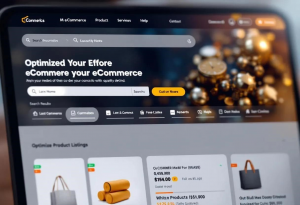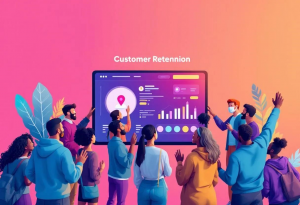Let’s get real about media buying. It might sound like complicated Wall Street jargon, but if you’re trying to grow your online business, understanding it is non-negotiable. It’s more than just throwing money at ads; it’s about getting your message in front of the right people, at the right time, for the right price. Think of it as an investment, not just another expense.
I’m Mark Olsen, and after years of freelancing and my time at Innovate Solutions, I’ve seen how smart media buying can turn a struggling online business into a success story. This isn’t just theory; it’s practical, data-backed advice from the trenches.
From Mad Men to Machines: The Evolution of Media Buying
Media buying isn’t new. Think old-school print ads, radio jingles, and TV commercials – Mad Men, right? But the digital age blew that all up. Now we’re talking programmatic advertising, real-time bidding (RTB), and a landscape that’s constantly in flux. The upside? Online businesses now have unprecedented control and targeting power.
Forget the old “spray and pray” approach. Today, winning at media buying means being precise, using data, and constantly tweaking your strategy. It’s about truly understanding your audience and speaking directly to them.
Laying the Groundwork: Planning Your Media Buying Strategy
Before you even think about clicking around in an ad platform, you need a plan. You can’t just wing it. Here’s my tried-and-true breakdown:
- Nail Down Your Goals: What do you really want? More sales? Brand recognition? More leads? Get specific. “More traffic” isn’t good enough. Aim for something like “increase qualified leads by 20% in Q3.”
- Know Your Customer: Who are you trying to reach? Build detailed buyer personas. Age, location, interests, online habits – the more you know, the better your chances of winning.
- Set Your Budget: How much can you realistically spend? Don’t overextend yourself. Start small, test your campaigns, and then scale up.
- Pick Your Channels: Where does your audience hang out online? Social media? Search engines? Specific websites or forums? Go where they are.
- Craft Your Message: What will grab their attention? High-quality visuals, compelling copy, and a clear call to action are crucial.
It might sound like a lot of work upfront, but it’s the bedrock of a successful campaign. Think of it like building a house – you wouldn’t start without a blueprint, would you?
Where to Spend Your Ad Dollars: A Channel Guide
The digital world is bursting with media buying channels. Let’s dive into some of the most popular and effective options:
Programmatic Advertising: Automation to the Max
Programmatic advertising uses algorithms and real-time bidding to automate the buying and selling of ad space. It lets you target specific audiences across a huge network of websites and apps. Imagine having a robot that negotiates the best ad deals for you, 24/7. That’s programmatic in a nutshell.

The Good: Super efficient, laser-focused targeting, data-driven improvements.
The Not-So-Good: Can be tricky to set up, requires constant monitoring, and there’s a risk of ad fraud.
Direct Media Buying: The Power of Relationships
Direct media buying means working directly with publishers to buy ad space. It’s a smart move for reaching very specific audiences or snagging premium ad spots. It’s all about building connections and getting exclusive deals.
The Good: Access to top-tier inventory, more control over placement, possibility of custom solutions.
The Not-So-Good: Time-consuming, demands strong negotiation skills, and can be pricier than programmatic.
Social Media Ad Buying: Engage Your Audience
Platforms like Facebook, Instagram, Twitter, and LinkedIn provide powerful ad tools to target users based on demographics, interests, and even their online behavior. Social media ad buying is a must for building your brand, boosting engagement, and generating leads.
The Good: Highly targeted, massive reach, diverse ad formats, strong engagement potential.
The Not-So-Good: Can be competitive, needs constant attention, and algorithm changes can throw a wrench in things.
Data is Your North Star: Optimizing for Success
In media buying, data rules. You need to track your results, analyze your performance, and tweak your strategy based on what you learn. This isn’t a “set it and forget it” game. It’s a continuous loop of refinement.
Here are the key metrics you should be watching:
- Impressions: How many times your ad popped up.
- Clicks: How many times people clicked on your ad.
- Click-Through Rate (CTR): The percentage of impressions that led to clicks.
- Conversion Rate: The percentage of clicks that turned into a desired action (like a purchase or sign-up).
- Cost Per Acquisition (CPA): How much it costs you to get a new customer.
- Return on Ad Spend (ROAS): How much revenue you get back for every dollar you spend on ads.
Tools like Google Analytics, built-in platform dashboards (like Facebook Ads Manager), and third-party analytics platforms can help you track these metrics and spot areas where you can improve. Don’t be afraid to A/B test different ad creatives, targeting options, and bidding strategies to see what really clicks with your audience.
Success Stories: Real-World Wins
Take this example: A local e-commerce store selling handmade jewelry was struggling to get noticed. They launched a social media ad campaign targeting women aged 25-45 who liked fashion and handmade goods. They A/B tested different ad designs and discovered that images showing the jewelry being worn in everyday life worked best. By keeping a close eye on their results and making adjustments, they boosted their sales by 30% in just three months!
This is just one example, but it shows how important it is to have a solid plan, track your data, and be ready to adapt. Media buying isn’t about luck; it’s about using a scientific approach to your marketing.
Your Action Plan: Launching Effective Campaigns
Alright, what’s the bottom line? Here’s a quick checklist to get you going:
- Start with a Plan: Define your goals, get to know your audience, and set a realistic budget.
- Pick the Right Channels: Don’t spread yourself too thin. Focus on the channels where your audience is active.
- Create Awesome Ads: High-quality visuals and persuasive copy are a must.
- Track Your Results: Monitor your key metrics and make changes as needed.
- Experiment! A/B test different options to see what gets the best results.
- Stay in the Know: The digital world is always changing, so keep learning and adapting.
Media buying might seem complex, but it’s a skill you can learn and master. By following these principles and staying curious, you can unlock the power of media buying and take your online business to the next level. It’s not about magic; it’s about method.
Media Buying FAQs
Here are some common questions I often hear:
- What’s the difference between programmatic and direct media buying? Programmatic is automated and uses algorithms, while direct involves direct negotiations with publishers.
- How much should I spend on media buying? It depends on your goals and budget. Start small, test, and scale.
- What are the most important metrics to track? Impressions, clicks, CTR, conversion rate, CPA, and ROAS.
- How often should I optimize my campaigns? Regularly, at least once a week, or even daily if you have a large budget.
- Is media buying worth it for small businesses? Absolutely, but it requires a strategic approach and a willingness to learn.
In the end, media buying is an investment in your business. By understanding the basics and using effective strategies, you can reach your marketing goals and achieve sustainable growth. Good luck!





